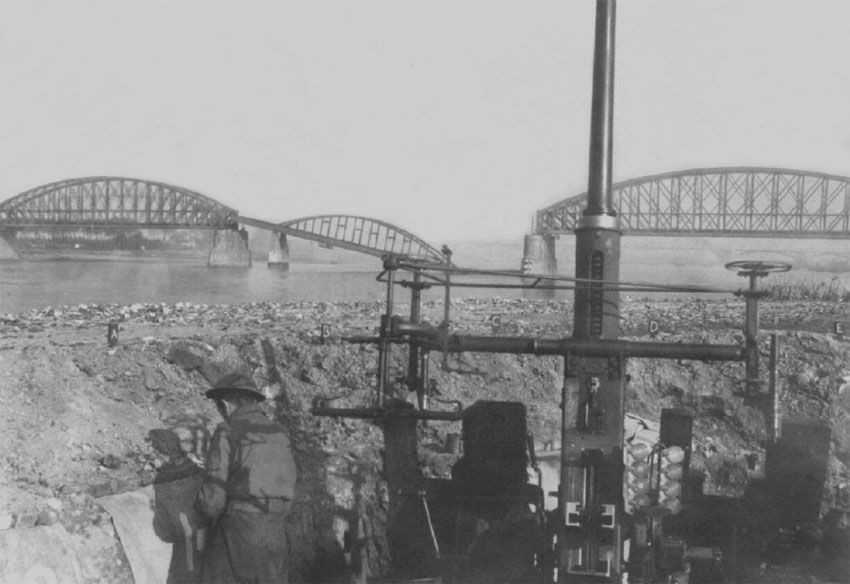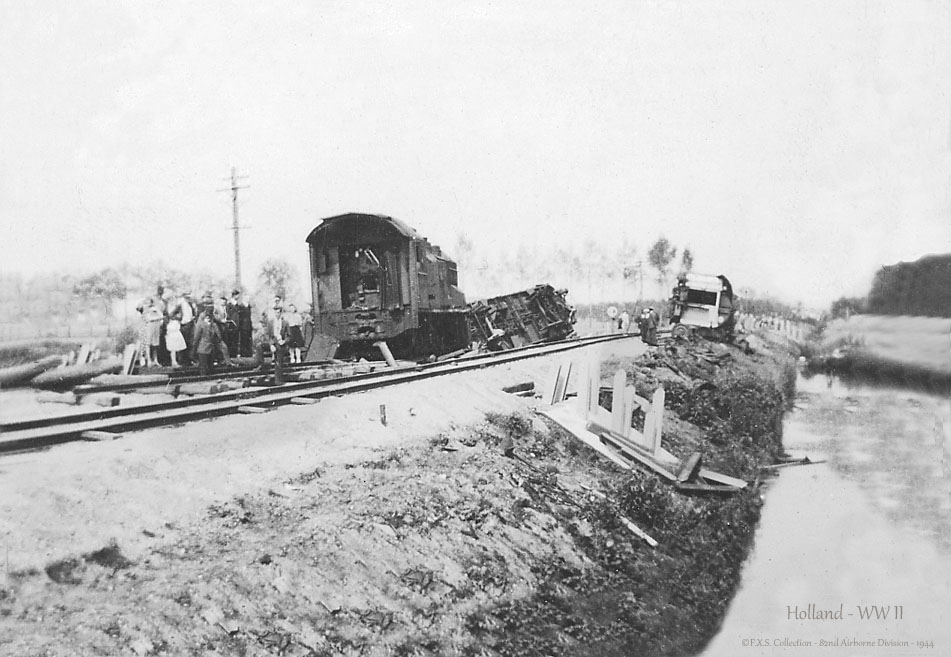
|
|
|
|
|
|
CONTACT US |
|

 |
|
||||||||||||
 |
|||||||||||||
The photographs below are from the collection of Corporal Francis. X. Schweikert. They were acquired during the Market Garden campaign in 1944. Some photos are of the May,1940 German invasion of Holland. There is a picture of the Nijmegen vehicle bridge that was blown by Dutch military engineers as German forces were closing in. The railroad bridge was also destroyed in 1940. It's interesting to note the pontoon bridge the German's constructed across the Waal river until both the big bridge and the rail bridge could be repaired.
Only two of the pictures had any markings on them. 1) The picture of the priest in Grosbeek had this address stamped on the back "Photomaton, Hertogstraat 49, Nijmegen". 2) The German military funeral in the airplane hangar had Giessen written on the back side of one of the photos, the only indication of where it (the funeral) may have taken place.
This photo was taken on the side of HH Cosmas en Damianus church in Groesbeek, Holland. You can still see remnants of the brick wall on Kloosterstraat with Google Earth's street view.
The Nijmegen vehicle bridge (below) was blown by Dutch military engineers in May of 1940 as German forces approached.
Another 1940 view of the Nijmegan vehicle bridge.
(Sometimes called; "The big bridge" by members of the 82nd Airborne Division.)
This 1940 picture of the Nijmegen rail bridge shows a temporary pontoon bridge in the foreground constructed by the Germans. The temporary bridge was necessary after both the rail and vehicle bridges over the Waal river were blown with explosives in May of 1940. In 1944 the same span was dropped into the Waal. (see picture below)
Below is a 1944 British archive photo of a AA gun pit placed between the two bridges in Nijmegen. Notice the difference between the two center spans, in this picture and the picture above. When the span was replaced the new arch's length was shortened. No doubt to conserve steel for the German war effort. Two new supporting piers were also added where each end of the arch meets the rail bed.(You can just about see the vehicle bridge on the horizon, under the span on the right. The view is looking to the east on the southern shoreline of the Waal.) 
The next five photographs are of a Luftwaffe, Wehrmacht military funeral. One of the photographs was marked with "Giessen" perhaps giving an indication of where the scene was taking place, Giessen, Germany. (A website visitor has confirmed the six photos were indeed taken at the Giessen Flughafen. They may have been taken near the end of Spain's civil war in 1938,39. The German Luftwaffe supported Franco's nationalist party and used the war as a testing ground in preparation for WW-II. The last of the five photos shows the expansion of the main building at the airport which took place in 1939, approximately.)
Notice the steam locomotive approching beneath the cloud of smoke.
A downed German bomber during invasion of Holland, May 1940. - Heinkel He 111.

A distant view of picture above.
The writing in the street refers to the Dutch Nazi-sympathiser, Anton Mussert.
"Niets" They were right.
Have questions about the photos, e-mail us here.

|
|